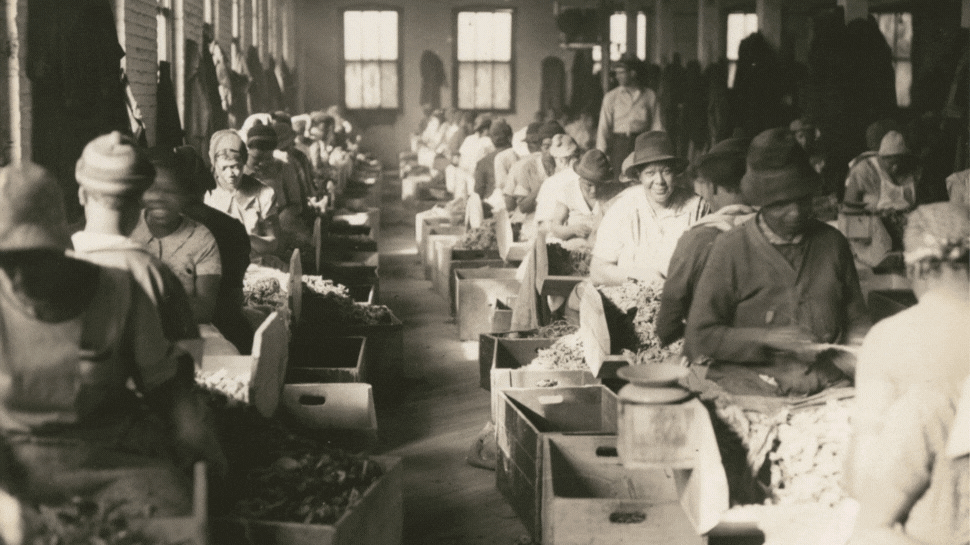Opening August 16 and timed with the 150th anniversary of the R.J. Reynolds Tobacco Company, Reynolda’s newest exhibition, “Camel City: Tobacco and Transformation: 1875–1964,” offers a nuanced, in-depth exploration of Winston-Salem’s industrial rise and the people who made it possible.
Curated by Deputy Director Phil Archer and Archivist Bari Helms, the exhibition draws primarily from loans from R.J. Reynolds Tobacco Company, along with objects sourced from the Reynolda House Archives and Forsyth County Public Library, to trace R.J. Reynolds Tobacco Company’s rise from a small red brick factory to a 20th‑century powerhouse.
History, by the numbers:
- 1875: The year R.J. Reynolds Tobacco Company was founded in WS
- 1913: The year Camel cigarettes launched
- 4: The (very few) number of years it took for Camel to become the No. 1-selling cigarette brand in the US, capturing ~40% market share by mid‑1920s
- 1946: The year the ad campaign “More Doctors Smoke Camels” launched, running until the early 1950s
- 17,000+: The number of RJR workers during its peak employment era
- Thousands: Estimated number of Black women employees
The “ad man,” explored:
Original advertisements, branding materials, and masterworks by Frederick Mizen, Edward Leigh Chase, and McClelland Barclay illustrate how tobacco companies used fine art to align their products with a polished, aspirational lifestyle. Meanwhile, archival photographs reveal the realities of factory life — both its modern efficiencies and the challenges workers faced.

Workers in the stemming room of a tobacco factory, 1938 (1); Worker Strike at R.J. Reynolds Tobacco Company, 1947 (2); Strikers from United Tobacco Workers Local 22 union on the picket line at Piedmont Leaf Tobacco Company, 1946 (3); Arrest of 22-year-old Margaret DeGraffenreid (4); Gwendolyn Bailey entering R.J. Reynolds High School with Velma Hopkins and Harvey Johnston during the beginning of integration for R.J. Reynolds High School, 1957 (5).
Photos courtesy of Forsyth County Public Library Photograph Collection, Winston-Salem, N.C.
Labor behind the rise:
The exhibition amplifies marginalized voices, particularly Black women, whose labor was critical to RJR’s early success. Visitors will experience a complex and thought-provoking narrative that interweaves industry, identity, labor, and social change.
Special ways to see it:
From “Drinks at Dusk” to curated speaker panels, lifelong locals and Camel City newbies can plunge deeper into the history with eight special events during the exhibition’s run.
Plan your visit + get tickets.












